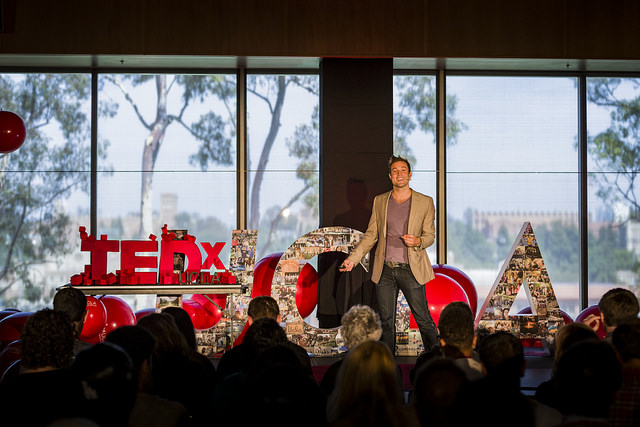Don Vaughn, a UCLA Ph.D. Student and DJ, gives us the inside scoop on the amazing powers of the human brain.
Inside each one of us is a beautiful symphony.
100 billion neurons firing in concert, constructing this vivid reality we are living in..and inside each little piece of that neural activity lives a little bit of what makes you, you. After your experiences today, that activity will have shifted and you will never be the same. You are inextricably tied to your brain.
When I first learned these principles, when I was sixteen,I fell in love with the brain and I’ve been doing neuroscience research ever since.
Now one day, we were doing a new MRI experiment and I was surprised because the experiment went well, but much to all of our shock I had a hole in my brain.
It was a pretty big one too; it was like 30% of my cerebellum just wasn’t there which as you might imagine, I was pretty shocked because I didn’t feel like anything about me or my life and my experience of the world had changed, or was missing.
The cerebellum is one of the most fundamental parts of your brain – it has like 80% of all of your neurons. So I got interested now there’s this collision between what your brain is supposed to do what is dealt and somehow it finds a middle ground. I became really interested in the idea of your brain as a dynamic, flexible system.
And to that end, I want to tell you the story of Cameron Mott.

Just after her third birthday, Cameron started having violent seizures. They started becoming worse and worse, and eventually she was losing her ability to speak. Doctors diagnosed her with something called Rasmussen’s encephalitis and the only real treatment for this was hemispherectomy – cutting out half of her brain.
Keep in mind that one half of your brain controls and is responsible for movement and sensation in the other half of your body. So this surgery would immediately leave Cameron hemiplegic.
But just four weeks post-op she walked out of the hospital. She is still dealing with a bit of hemiplegia and a bit of peripheral vision loss, but otherwise she is able to run around with her peers and she is cognitively quite deft – it’s amazing.
Consider that for a second: if I gave you half of a car, or half of a phone, you wouldn’t be going anywhere in LA and you wouldn’t be on Twitter right now tweeting about how mind-expanding TEDxUCLA is. Because for most devices 50% equals broken, but somehow in this instance with Cameron, 50% is almost equal to 100%.
How is that possible?
Well, the remaining part of Cameron’s brain sensed the massive loss of neural tissue and it physically rewired and reorganised itself to take over everything that the other half had previously handled.
That is an ability known as neuroplasticity. It’s the ability of the brain to change itself – to rewire.
I think it’s not a very good analogy when people say your brain is like a computer. It’s actually just a really bad one because your brain is not static hardware. And although the prevailing view in neuroscience for a long time was that the adult brain is a fixed processing unit,it seems like everyday we find a new result that says that’s not the case at all.
While there is structure to your brain, it is a dynamic, flexible biology.
Let me say that again, you and your brain are static but you’re also dynamic – you can change yourself.
So the idea worth spreading is this:
What if we were able to treat injuries and impairments in an entirely new way, by hacking in to your brain’s ability to rewire itself?




